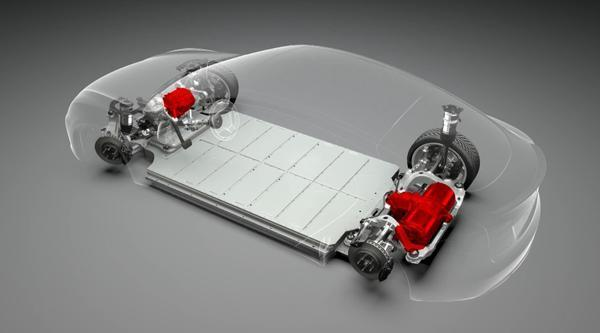Tesla is once again making headlines with its innovative approach to electric vehicle (EV) battery technology. The introduction of Tesla’s new lithium-iron-phosphate (LFP) battery tech marks a significant shift in the EV industry, promising enhanced safety, longevity, and affordability. With this development, Tesla aims to revolutionize the way we think about sustainable transportation. In this article, we’ll explore the implications of Tesla’s LFP battery technology, how it compares to traditional lithium-ion batteries, and what it means for the future of electric vehicles.
Understanding Tesla’s LFP Battery Technology
What is Lithium-Iron-Phosphate (LFP)?
Lithium-iron-phosphate batteries are not entirely new but have gained renewed attention due to their promising attributes. Unlike conventional lithium-ion batteries that use cobalt and nickel, LFP batteries employ iron and phosphate. This composition offers several benefits:
- Safety: LFP batteries are less prone to overheating and are more stable, reducing the risk of thermal runaway.
- Longevity: They boast a longer cycle life, which means they can be charged and discharged more times over their lifespan.
- Cost-Effectiveness: By eliminating costly materials like cobalt and nickel, LFP batteries are generally cheaper to produce.
Why is Tesla Switching to LFP?
The shift towards LFP technology allows Tesla to address several key challenges faced by the EV industry:
- Affordability: By lowering production costs, Tesla can make EVs more accessible to a broader audience. According to Electrek, the company aims to price its LFP-equipped vehicles more competitively, potentially accelerating EV adoption worldwide.
-
Supply Chain Stability: The use of abundant materials like iron and phosphate helps Tesla mitigate supply chain risks associated with sourcing cobalt and nickel, as highlighted by Bloomberg Green.
-
Sustainability: LFP batteries align with Tesla’s commitment to sustainability by reducing reliance on conflict minerals and promoting more ethical sourcing practices.
How Does LFP Compare to Traditional Lithium-Ion?
While both LFP and traditional lithium-ion batteries have their strengths, it’s essential to understand the differences:
- Energy Density: Traditional lithium-ion batteries offer higher energy density, meaning they can store more energy in a smaller space. This translates to longer driving ranges—a crucial factor for consumers.
-
Temperature Tolerance: LFP batteries outperform in extreme temperatures, making them ideal for varied climates without compromising performance.
-
Cycle Life: LFP batteries typically last longer, which can be a significant advantage for consumers looking to keep their vehicles for extended periods.
The Impact of LFP Technology on the EV Market
Market Expansion and Accessibility
Tesla’s strategic move to incorporate LFP technology is expected to lower entry barriers for potential EV buyers. Reuters Mobility reports that this could lead to a surge in demand, especially in price-sensitive markets like Asia and Europe.
Enhancing Charging Infrastructure
With their robust safety profile, LFP batteries can potentially support faster-charging technologies. According to InsideEVs, Tesla is working on expanding its Supercharger network to accommodate these advancements, offering drivers quicker charging times and more convenience.
Comparing Tesla’s LFP Models
For consumers considering a Tesla, it’s essential to know how LFP-equipped models stack up against others. Here’s a quick comparison:
- Model Range: LFP batteries may have slightly shorter ranges compared to nickel-cobalt-aluminum (NCA) variants. However, for daily urban use, the difference is negligible.
-
Cost Savings: Lower production costs are expected to reflect in the sticker price, making these models more budget-friendly.
-
Maintenance: With extended life cycles, LFP batteries could mean fewer replacements and lower long-term maintenance costs.
Practical Tips for Potential Buyers
How to Charge Your Tesla with LFP
Charging an LFP-equipped Tesla is straightforward and offers flexibility:
- Home Charging: Install a Tesla Wall Connector for convenient overnight charging.
- Supercharger Network: Take advantage of Tesla’s expansive Supercharger network for quick top-ups during long trips.
- Public Chargers: Use Tesla’s app to locate compatible public charging stations.
Where to Buy LFP-Equipped Teslas
As Tesla rolls out LFP models, interested buyers should:
- Visit Tesla’s Official Website: Stay updated on model availability and pricing.
- Check Local Dealerships: Tesla’s showrooms will provide firsthand experience and test drives.
- Stay Informed: Follow reliable sources like CleanTechnica and AutoCar for the latest news and insights.
What to Compare When Choosing an EV
When selecting an EV, consider:
- Range Requirements: Assess your daily commute and travel needs.
- Budget: Determine your budget, factoring in potential savings from lower maintenance and fuel costs.
- Charging Options: Evaluate available charging infrastructure in your area.
Conclusion: The Future of EVs with Tesla’s LFP Technology
Tesla’s introduction of lithium-iron-phosphate battery technology is a pivotal moment for the electric vehicle industry. By prioritizing safety, affordability, and sustainability, Tesla is setting new standards and paving the way for broader EV adoption. As consumers, staying informed and understanding the benefits of LFP technology will empower us to make better, more sustainable choices.
Are you excited about the future of electric vehicles with Tesla’s new LFP technology? Share your thoughts and join the conversation! As we look ahead, the possibilities for cleaner, more accessible transportation seem limitless, promising a greener future for everyone.

